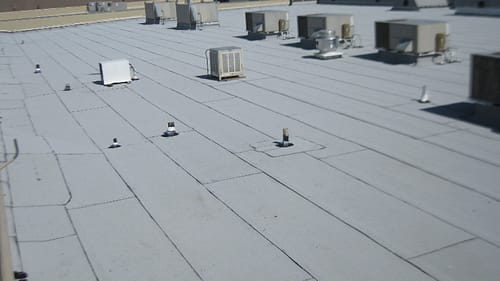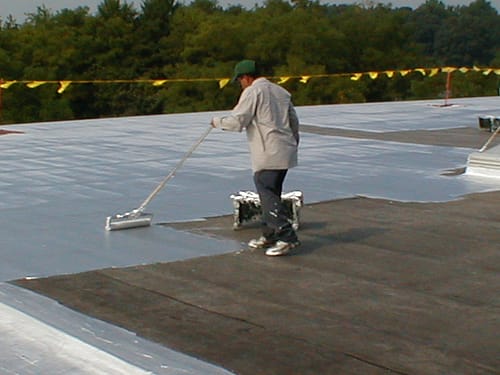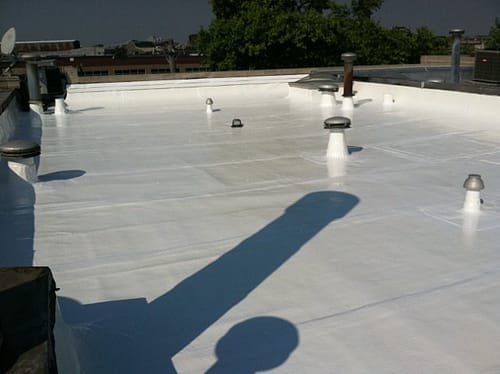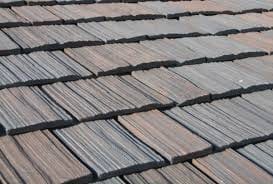What is TPO roofing?
TPO roofing (Thermoplastic Poly Olefine) is an elastic-plastic foil that is used for flat roofs. This foil looks very much like PVC, but its chemical structure is completely different. The TPO roofs does not contain plasticizers and the film retains its elasticity throughout its life. The foil is available in multiple colors. The most commonly used colors are: white, light gray and anthracite.
What is PVC roofing? And How long does a PVC roof last?
A PVC roofing consists of Poly Vinyl Chloride, a plastic. PVC roofing material is thermoplastic due to the addition of plasticizers. The material has the shape of a membrane and it is mainly used on flat roofs or on slightly sloped roofs. PVC is resistant to chemicals, but the organic agents such as bitumen or polystyrene weakens the materials.
The PVC & TPO roofing material provides good resistance to chemicals and external factors like wind and fire. So they have a long lifespan like 25 to 35 years and it requires less maintenance.
What is the difference between a TPO and PVC roof?
- Environmentally Friendly: No chlorine or plasticizers
PVC is naturally a hard material, but added plasticizers make the roofing membrane flexible and easier to process. Due to prolonged exposure to UV radiation and other weather influences, the plasticizers become weak and get damaged easily. TPO contains no chlorine or plasticizers and is better for the environment.
Most TPO roofs have reached their technical service life of an average of 20 – 25 years.
- Sustainability: Long service life and less waste
Although TPO is relatively thinner, it has better performance and a longer lifespan than PVC. For example, a TPO roofing membrane is 1.2 mm and it delivers the same performance as a PVC roofing membrane of 1.5 mm. But, when a PVC roof has to be cleaned after 20 years, the amount of waste is considerably larger. Because TPO does not contain any plasticizers, so the roof does not age quickly.
- Resistance: Micro-organisms and Precipitation:
The algae growth can thrive on the roof. Their presence makes PVC roofing hard and stiff. And it is also hard to predict the presence of algae growth during heavy rainfall. Whereas TPO is characterized by its flexibility, even at lower temperatures. The TPO roof can withstand a hail storm but PVC gets damaged severely.
What is the difference between TPO and EPDM?
EPDM is a synthetic rubber that has ethylene, propylene and diene monomer as core components. While traditional rubber occurs in nature, the EPDM is a lab product. It is obtained by polymerizing ethylene, propylene and a diene. This polymer is then vulcanized, which produces a rubber.
TPO (Thermoplastic Poly-Olefine) roofing material combines the durability and flexibility of rubber membranes with the advantages of a thermally weldable membrane. It is hybrid roofing material.
When it comes to EPDM vs TPO, the most important thing to consider is the curb appeal, durability, cost and longevity for your commercial roof.
EPDM has less curb appeal than TPO. EPDM retains the sunlight whereas the TPO reflects the sunlight. On the other hand, TPO has a wide range of colors guaranteeing better property insulation. TPO is cheaper than EPDM and has an expected life of at least 30 years.




